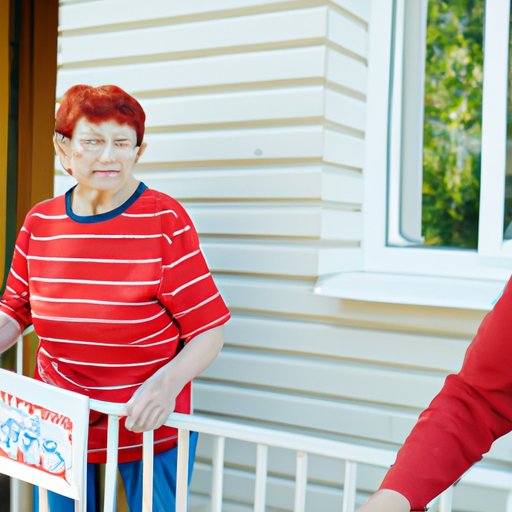I. Introduction
Individuals with learning disabilities require specialized care that caters to their unique needs. A care home specially designed for individuals with learning disabilities can provide the necessary support and a safe environment that can help them lead fulfilling lives. This article is a comprehensive guide to setting up a care home for individuals with learning disabilities that covers research and planning, funding and resources, staff and care planning, facilities and equipment, legal requirements, creating a safe environment, and outreach.
II. The Ultimate Guide to Setting up a Care Home for Individuals with Learning Disabilities
A care home for people with learning disabilities is a residential facility that provides care and support to individuals with learning disabilities. The purpose of such a facility is to create an environment that can help individuals live independently and lead fulfilling lives. The benefits of having a care home for learning disabilities are numerous. Firstly, it can provide a supportive environment that caters to the unique needs of individuals with learning disabilities, thereby promoting better health outcomes and a higher quality of life. Secondly, it can help individuals develop social and life skills, which can allow them to build relationships and lead fulfilling lives.
To achieve these benefits, a care home for learning disabilities must be designed with the specific needs of individuals with learning disabilities in mind. Facilities should be safe, comfortable, and equipped with the resources needed to provide quality care. This includes access to the necessary equipment, therapy and counseling services, and recreational activities that cater to their needs.
III. 5 Essential Steps to Creating a Successful Care Home for People with Learning Disabilities
Creating a successful care home for individuals with learning disabilities requires a lot of research and planning. Here are the five essential steps that can help the aspiring care home owner:
Step 1: Research and Planning
The first step is conducting adequate research on what it entails to run a care home for individuals with learning disabilities. Research should provide insights into the needs of the individuals, the market, the specific regulations, employer requirements, and various health care standards.
Step 2: Funding and Resources
Creating a care home for individuals with learning disabilities requires significant funding. You may qualify for funding from the local council, which provides bursaries for social care services. Alternatively, you may apply for grants available from various charities, foundations, or multi-agency funding schemes. Owners should also consider private funding from investors, members of the community, and family members of the clients.
Step 3: Staff and Care Planning
Excellent care homes require skilled and caring staff who can provide specialized care to each client. Employers should invest in dedicated recruitment and training to develop their workforce. This includes role-specific training, safeguarding workshops, and equality and diversity awareness training.
Step 4: Facilities and Equipment
Facilities must be physically and visually accessible to meet the specific needs of the individual. There should be a range of appropriate facilities, including living space, dining facilities, recreational areas, and dedicated communal entertaining spaces. A range of assistive technology should be installed, enabling staff to monitor individual health and wellbeing.
Step 5: Marketing and Outreach
The final step of setting up a care home for individuals with learning disabilities is to generate outreach and attract prospective clients. Owners should promote their services to the local authority and healthcare agencies, charities, hospitals, and local voluntary groups. The use of social media, direct mailing, and advertising strategies can also be employed.
IV. Navigating the Legalities of Starting a Care Home for Learning Disabilities
Creating a care home for individuals with learning disabilities requires abiding with various legal requirements, including licensing, safety and quality standards, and compliance with the Code of Practice. Employers should consult with the Care Quality Commission and local council authorities to identify and satisfy the necessary requirements. Essential regulations include the Physical accessibility regulation and the Health and Safety at Work Act, which outlines the requirements concerning building alterations and efficient health and safety policies.
V. Why Starting a Care Home for Learning Disabilities is a Rewarding Experience
Individuals with learning disabilities often struggle with isolation and accessibility to facilities in mainstream society. Care homes designed specifically to provide bespoke care requirements in a supportive and safe environment can greatly enhance their quality of life. Owners report numerous rewards of providing specialized care, including a sense of fulfillment from improving wellbeing, creating a positive impact on individuals and their families and improving the community’s overall quality of life.
VI. Tips from Experienced Care Home Owners on Creating a Safe and Positive Environment for Residents with Learning Disabilities
Providing a safe and positive environment for residents can significantly improve quality of life. Experienced care home owners suggest starting by creating person-centered care plans, wherein activities and care are tailored to meet the individual’s unique interests, abilities, and disabilities. Other essential tips include increasing accessibility to facilities through adjustable furniture, installing assistive technologies, promoting a healthy social life and engaging in engagement activities such as community collaborations and intergenerational mixing.
VII. Conclusion
Setting up a successful care home for individuals with learning disabilities requires significant effort, resources, and regulatory compliance. However, the successful creation of a bespoke care facility can significantly enhance the quality of life of individuals with learning disabilities. The rewards are numerous and far-reaching. Hence we encourage aspiring care home owners to consider embarking on this rewarding journey and creating positive change. By following the steps outlined in this guide and expert tips from experienced care homes, owners can provide the optimal standard of care to individuals who need it most.
(Note: Is this article not meeting your expectations? Do you have knowledge or insights to share? Unlock new opportunities and expand your reach by joining our authors team. Click Registration to join us and share your expertise with our readers.)
